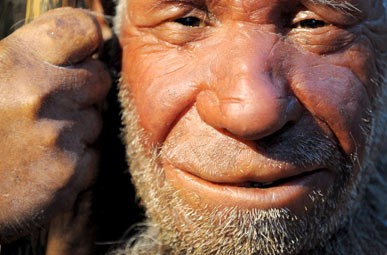
Having analyzed the adult mortality of fully modern humans and Neanderthals who coexisted for some 150,000 years, Washington University anthropologist Erik Trinkaus concludes that the two groups experienced roughly the same life expectancies, in a study appearing this week in the Proceedings of the National Academy of Sciences. The proportion of the population of adults under forty versus those over forty was roughly the same for both groups. If Homo sapiens enjoyed demographic advantages, they may have been at the beginning of life rather than the end, realized in terms of higher fertility or lower infant mortality. But as researchers delve into Neanderthal life with ever-greater depth and precision, the gap between winners and losers continues to tighten. Recent studies have shown evidence of Neanderthals eating varied diets of grains and vegetables, rather than the megafauna-dependent meal plans once supposed, and Neanderthal and sapient infants had brains of roughly the same relative size�with Neanderthal babies actually growing their brain faster than modern counterparts in the early years.
 Gearfuse Technology, Science, Culture & More
Gearfuse Technology, Science, Culture & More


